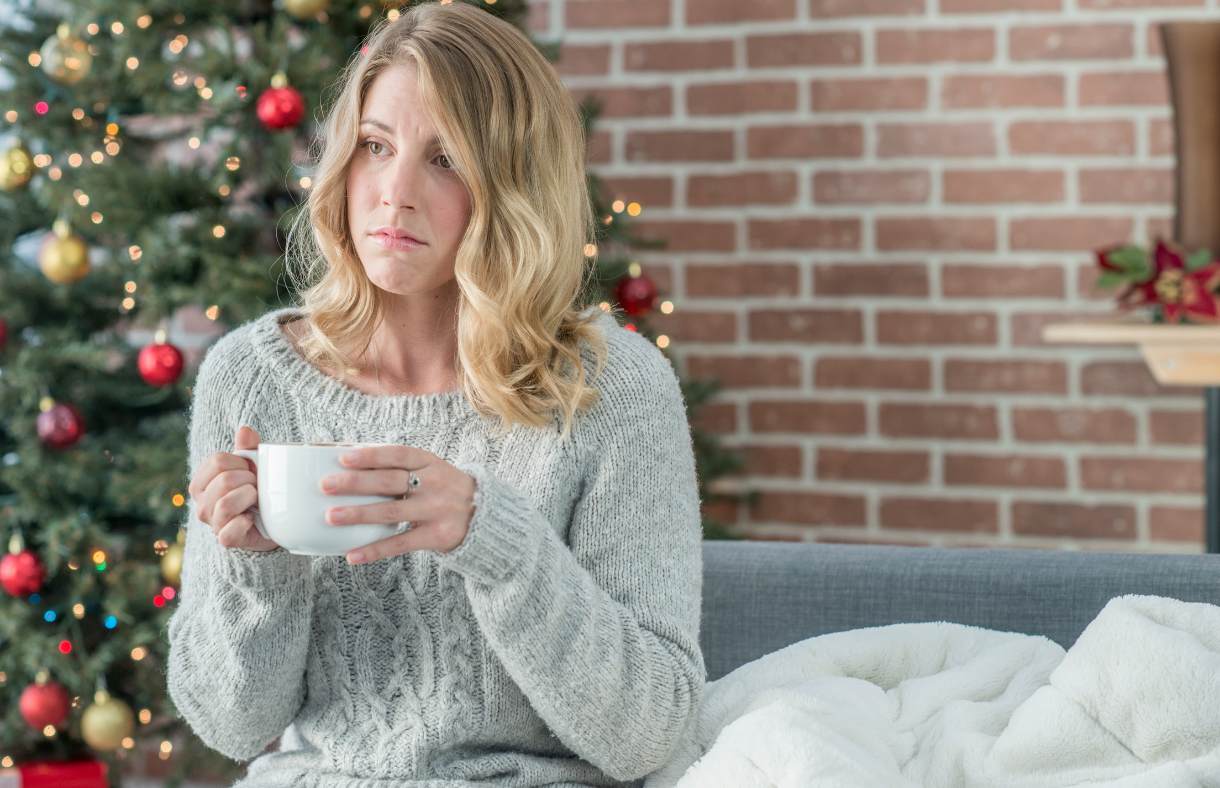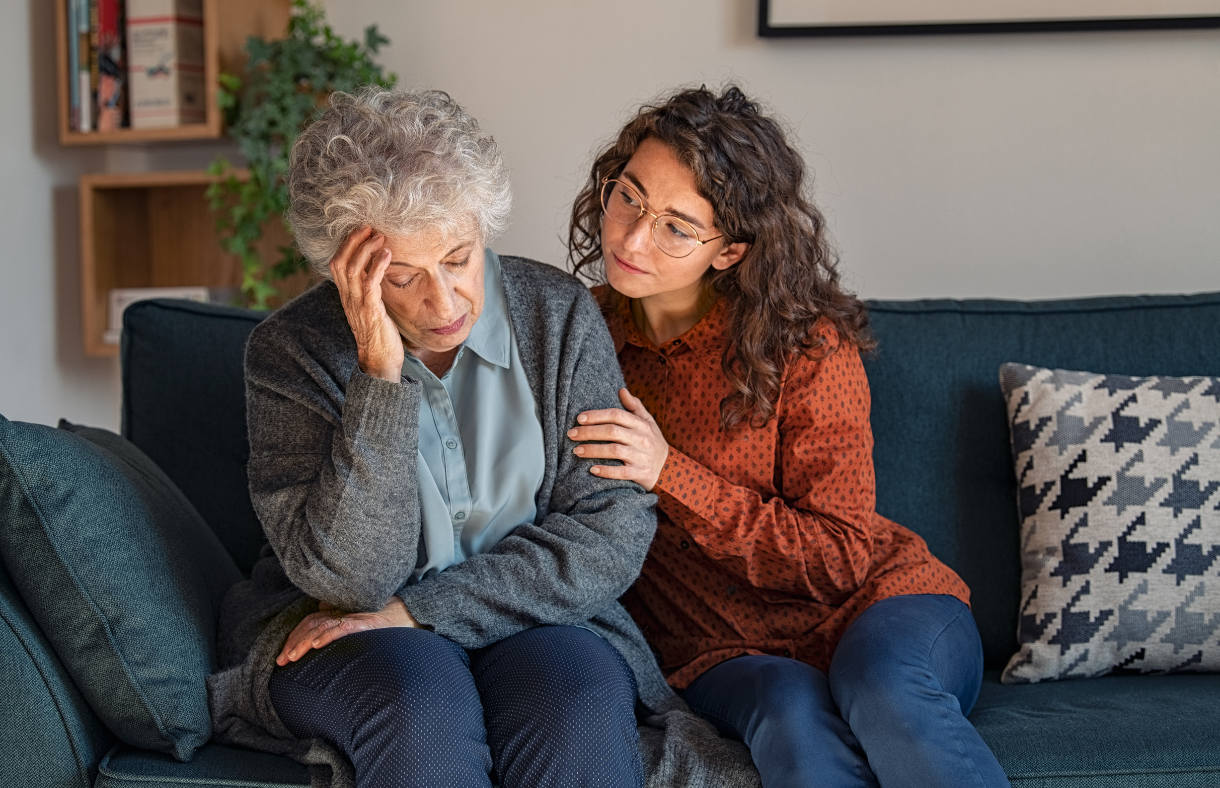Many people believe that suicide rates soar in December, when nights are longest, and when “joy of the season” only seems to mock the unhappiness of major life challenges. But nonetheless, the popular belief is wrong: in reality, the greatest number of suicides occur from April to June, and December is the lowest-risk month.
It’s actually depression rates, or at least depression symptoms, that tend high in winter; and separating this from suicide statistics is in no way intended to downplay the pain of winter depression. At least one person in 200 has seasonal affective disorder (SAD), a form of depressive disorder that is dormant for about 60 percent of the year and active in (usually) winter. For some people, SAD is a one-time experience; but at least half of sufferers see it return in subsequent years. In some cases, it continues beyond the winter months and turns into year-round major depressive disorder.

When “Happy Holidays” Seems a Contradiction in Terms
Seasonal affective disorder brings typical depression symptoms: losing interest in hobbies and social activities; difficulty concentrating or planning; neglected self-care; inability to see any real good; a permeating sense of hopelessness. In addition, people with SAD are more likely than those diagnosed in warmer months to gain weight from carbohydrate-heavy comfort foods. Or to stay in bed (hibernate?) for extra hours.
While SAD symptoms don’t begin and end with the holiday season, they may be more obvious then. Consider a typical December:
- Perceived responsibilities increase amidst holiday projects and invitations.
- Everyday outings become more hectic and expensive.
- Late nights and special events multiply.
- Time spent at school or work decreases, upsetting daily routines and leaving families (especially those with school-age kids) seeing more of each other than usual.
- People see more of their extended families as well, and often take on extra pressure and expense with travel and/or hosting.
- Fattening sweets and treats are everywhere, increasing temptations to unhealthy overeating.
All of which is stressful even for those who enjoy it most—and more so for people with depressive tendencies. Not to mention their families: it’s a challenge to be sympathetic when you’re overwhelmed with holiday duties and your life partner can’t summon the energy to get out of bed and help.
If You Have SAD
The best long-term help for seasonal affective disorder is medical treatment. Even if your doctor is taking a week off for the holidays, make an appointment for the first available opening if you suspect undiagnosed SAD. You may need medication, light therapy, and/or a support group referral.
(Note: No time of year is the wrong time to be evaluated for a disorder. If you happen to read this in July and it reminds you of symptoms you last had five months ago, ask a doctor about precautions against a next-winter recurrence.)
With or without a formal SAD diagnosis, you can take personal steps to curb your depression and still find happiness in the holidays.
- Remember the spiritual side of the season. Take extra time for prayer, meditation, inspirational podcasts, or whatever else helps you remember there’s more to holiday joy than parties.
- Limit screen time. Depression feeds on bad news and social-media envy.
- Strike a balance between nonstop socializing and toxic isolation. Make time each day to at least talk with a friend—and go ahead and accept that party invitation if it’s something you’d ordinarily enjoy—but be careful not to overdose on activity or turn conversation into a pity party.
- Mind your diet, and not just to avoid weight gain: eating your vegetables and proteins will better maintain a healthy energy level than will snacking on carbs all day. Another helpful hint: drink lots of water. Staying hydrated curbs food cravings and “feeling lousy” symptoms.
- Work physical activity into your days. Even an extra walk up the stairs helps.
- No matter how cold the weather or short the days, get all the natural light you can. Take outdoor walks. Open your curtains during daylight hours, even when it’s cloudy. If you get serious seasonal affective disorder every winter and nothing seems to help, consider moving to a more southerly latitude (where winter daylight periods are longer) for at least that part of each year.

If a Family Member Has SAD
The most important thing to remember is that they aren’t deliberately trying to ruin the season for you: they have a legitimate illness with legitimate health needs. Besides supporting them in their medical treatment and therapy journey, set an example by implementing the above tips into your own life. You don’t have to have an illness or disability to benefit from healthy eating, spiritual refreshment, and outdoor exercise in whatever sunlight is available—and it does anyone good to step away from the rush and perfectionism that makes many holiday seasons less than joyful. Plus, you’ll help your loved one by helping yourself: recharging your batteries will make you more empathetic and less grumpy.
And you both may discover holiday joys that run deeper than fancy decorations.
See also:
- BridgingApps Holiday Favorites
- Apps recommended for depression

